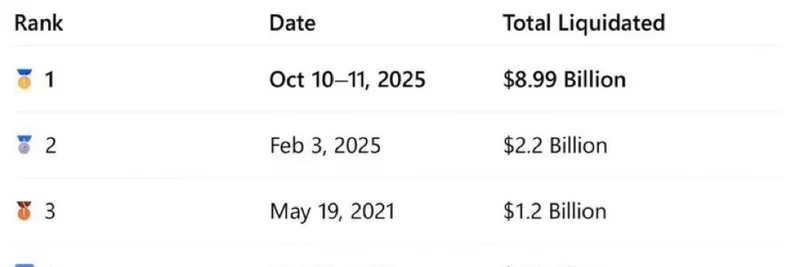If you've been anywhere near crypto Twitter lately, you know the market just went through one of its wildest rides. On October 10, 2025, a massive flash crash wiped out billions in leveraged positions, and prominent trader Ansem (@blknoiz06) sparked a conversation with his tweet questioning if this was the biggest notional liquidation event ever—bigger even than the infamous May 2021 crash. Let's break it down, especially focusing on how this shook up the meme token world, since that's our bread and butter here at Meme Insider.
The Trigger: Trade Tensions and a Sudden Plunge
It all started with escalating US-China trade wars. President Trump announced hefty 100% tariffs on Chinese goods, sending shockwaves through global markets. Crypto, being the volatile beast it is, reacted violently. Bitcoin (BTC) plummeted from around $122,000 to as low as $102,000 on some exchanges, a drop of over 15% in hours. Ethereum (ETH) fared worse, shedding 20-30%, while Solana (SOL) and Ripple (XRP) saw even steeper declines.
This wasn't just a dip; it was a deleveraging apocalypse. Liquidations happen when traders using borrowed money (leverage) get forced to sell as prices fall, creating a cascade effect. According to data from Coinglass and other trackers, over $19 billion in positions were liquidated in a single day—the largest in crypto history. For context, the previous record was around $1.2 billion during the May 2021 crash, when China cracked down on mining.
Ansem's tweet captured the moment perfectly: "thats probably largest notional liquidation ever? more than may 2021?" And the community chimed in quick. One reply from Jeremy (@Jeremyybtc) confirmed it with a chart, while lyxe (@cryptolyxe) pointed out how charts "literally went to 0" as order books got wiped clean.
Meme Tokens in the Crossfire
Meme tokens, those fun, community-driven coins often built on hype and virality, got absolutely hammered. Solana-based memecoins, in particular, saw market caps halve in minutes. Tokens like Dogecoin (DOGE) dropped 27%, but smaller ones fared even worse. Reports from exchanges like Binance and Bybit showed extreme volatility—Cosmos (ATOM) briefly traded at $0.001 on Binance, a glitchy low due to thin liquidity during the panic.
Why do meme tokens suffer so much in these events? They're highly speculative with lower liquidity, meaning a few big sells can tank the price. Plus, many traders pile in with high leverage, chasing quick gains. When the market turns, it's a bloodbath. But here's the silver lining: these crashes often flush out weak hands, setting the stage for rebounds. One reply in Ansem's thread mentioned $NEET holding strong, a nod to resilient meme projects that weather the storm.
Exchanges struggled too. Binance saw BTC hit $102k, while gas fees on Ethereum spiked to $350 for a simple swap. Stablecoins like USDe depegged to 65 cents temporarily, adding to the chaos.
Community Reactions and Lessons Learned
The replies to Ansem's tweet were a mix of shock, memes, and alpha-sharing. Stan (@stanthecup) joked about needing to "clue this guy in," attaching a humorous image, while others shared charts and personal stories of survival. It's classic crypto Twitter—turning pain into content.
For blockchain practitioners, this event underscores key lessons: Manage risk with stop-losses, avoid over-leveraging, and diversify beyond just memes. At Meme Insider, we see this as a reminder that while meme tokens offer massive upside, they're tied to broader market forces like geopolitics.
If you're looking to dive deeper, check out Ansem's original thread here. What's your take—did this crash change your strategy? Drop your thoughts in the comments, and stay tuned for more updates on how meme tokens are bouncing back.




